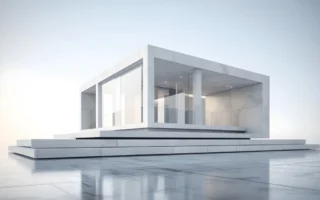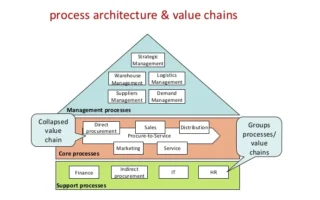Introduction:
In the realm of architectural visualization, rendering emerges as a pivotal tool, transforming abstract designs into vivid, lifelike representations. Through the magic of digital technology, architects can breathe life into their visions, creating immersive experiences that resonate with clients, stakeholders, and the public alike. This exploration endeavors to demystify the concept of rendering in architecture, delving into its techniques, applications, and transformative potential.
I. Rendering in Architecture: An Overview:
A. Evolution of Architectural Rendering Techniques
B. Importance of Rendering in the Design Process
C. Role of Digital Technology in Rendering Advancements
II. Understanding the Rendering Process:
A. 3D Modeling: Creating Digital Representations of Architectural Elements
B. Materials and Textures: Applying Surface Finishes and Properties
C. Lighting and Shadows: Crafting Realistic Illumination Effects
D. Camera Settings and Perspectives: Framing Views and Compositions
III. Types of Architectural Rendering:
A. Photorealistic Rendering: Emulating Real-World Lighting and Materials
B. Conceptual Rendering: Conveying Design Ideas and Aesthetics
C. Technical Rendering: Communicating Construction Details and Specifications
D. Artistic Rendering: Infusing Creativity and Expression into Visualizations
IV. Importance of Rendering in Architectural Practice:
A. Client Communication and Visualization: Facilitating Design Decision-Making
B. Marketing and Presentation: Creating Compelling Sales and Promotional Materials
C. Project Approval and Funding: Garnering Support and Investment
D. Design Evaluation and Analysis: Assessing Aesthetic and Functional Considerations
V. Techniques and Tools for Rendering:
A. Rendering Software: Overview of Popular Platforms such as Autodesk 3ds Max, SketchUp, and Blender
B. Material Libraries and Texture Mapping: Accessing Predefined Materials and Textures
C. Lighting Simulation and Analysis: Optimizing Illumination for Realistic Effects
D. Post-Processing and Image Editing: Enhancing Rendered Images for Presentation
VI. Challenges and Considerations in Rendering:
A. Balancing Realism and Aesthetics: Achieving Convincing Visuals Without Sacrificing Design Intent
B. Time and Resource Constraints: Managing Rendering Workflows for Efficiency
C. Hardware and Software Limitations: Optimizing Performance for Complex Scenes
D. Client Expectations and Feedback: Navigating Subjective Preferences and Revisions
VII. Case Studies and Examples:
A. Architectural Visualizations for Real Estate Development Projects
B. Interior Design Renderings for Hospitality and Retail Spaces
C. Urban Planning Visualizations for Public Infrastructure Projects
D. Historic Reconstruction Renderings for Preservation Efforts
VIII. Future Trends and Innovations in Rendering:
A. Real-Time Rendering Technology: Enabling Interactive and Immersive Experiences
B. Virtual and Augmented Reality Integration: Bridging the Gap Between Digital Models and Physical Spaces
C. Artificial Intelligence and Machine Learning: Automating Rendering Processes and Enhancing Realism
D. Sustainable Rendering Practices: Incorporating Environmental Considerations into Visualizations
Conclusion:
As architects navigate the complexities of contemporary design practice, rendering emerges as a indispensable tool, empowering them to communicate, visualize, and realize their architectural visions with unparalleled clarity and conviction. From conceptual sketches to photorealistic visualizations, rendering serves as a bridge between imagination and reality, shaping the way we perceive and experience the built environment. Embracing the transformative potential of rendering, architects stand poised to redefine the boundaries of architectural expression, inspiring awe, instilling wonder, and enriching the fabric of our built world with boundless creativity and innovation.




